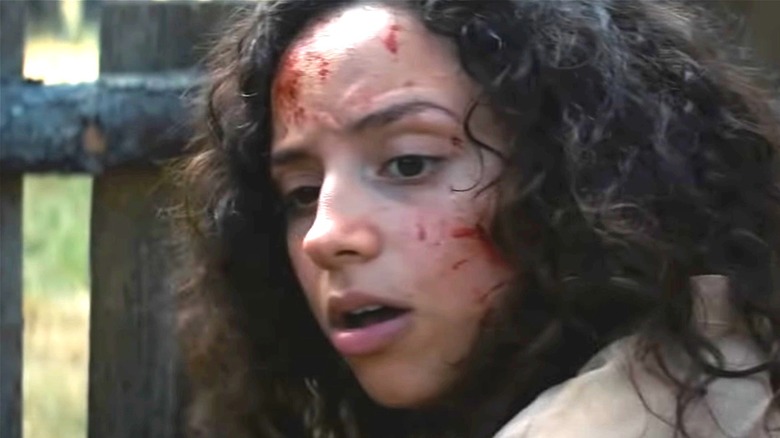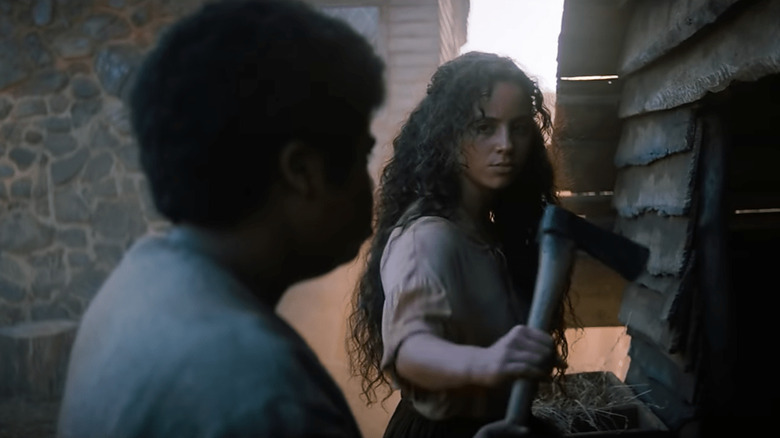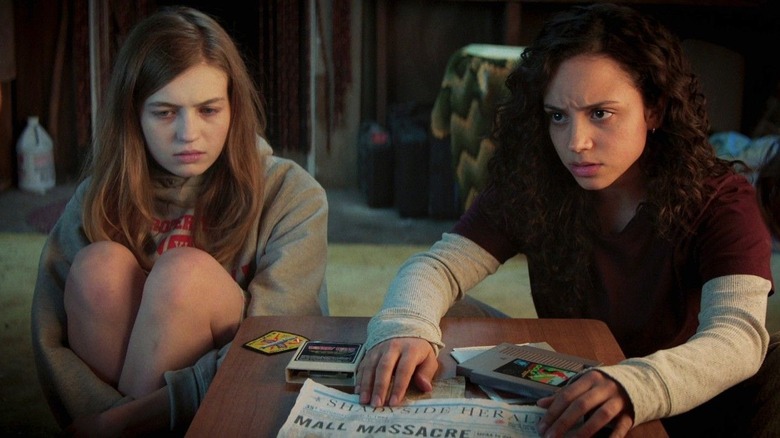The Ending Of Fear Street Part 3: 1666 Explained
By the time the credits roll on "Fear Street Part 3: 1666," our heroes have been through the wringer. Deena (Kiana Madeira) has learned the reason why the small town of Shadyside has suffered through centuries of poverty and tragedy. In 1666, Solomon Goode (Ashley Zukerman) made a deal with the devil to ensure his family's prosperity, and his descendants upheld the pact for generation after generation, making sure the people of idyllic Sunnyvale enjoyed the benefits and that the people eking out a living in Shadyside were offered as sacrifices to Satan.
Solomon's 1994 descendant, Sheriff Nick Goode (Zukerman in a dual role), is vanquished thanks to the heroic efforts of Deena, her brother Josh (Benjamin Flores Jr.), their friend Martin (Darrell Britt-Gibson), and Christine "Ziggy" Berman (Gillian Jacobs), the survivor of the murderous rampage in "Fear Street Part 2: 1978." Goode is killed, the curse is lifted, the undead killers are destroyed, and Shadyside begins to prosper as Sunnyvale gets some long-delayed karmic payback, and the film ends with Deena and Sam (Olivia Scott Welch) sharing a tender kiss as they look forward to a bright future together. All is well ... or is it?
The cycle begins anew
As the credits begin to roll, we cut to scenes of the Shadyside Mall, the site of our heroes' final battle against Sheriff Goode and his army of undead killers. It's business as usual as we slowly track through the mall and into the underground passages running between Shadyside and Sunnyvale, to the spot where centuries ago, Solomon Goode began the whole sordid affair. Lying there in the dirt is the sorcerous text Goode stole from Widow Mary (Jordana Spiro) when he killed her, which allowed him to forge his pact with the devil. As we pan in slowly on the book, a solitary fly buzzes and alights on it ... only for the book to be snatched away by the hands of an unseen figure.
In grand horror movie tradition, we're allowed a moment's contentment, a chance to be thankful that evil has been punished and the forces of good have persevered, only to have that security wrenched from us. We see the book fall into the hands of someone else, someone likely to start the whole cycle of death and misery all over again, and this time, there's no helpful spirit of Sarah Fier (Elizabeth Scopel) to help bring the monster to justice.
Horror in the grand tradition
Like the other films in the series, "Fear Street Part 3: 1666" isn't merely a portrait of the historical period it's set in (in this case, the 1660s, late 1970s, and the 1990s), but also a meta-textual portrait of the styles of film each individual chapter represents in the history of horror. "Fear Street Part 1: 1994" is a loving homage to the deconstructive slasher films Wes Craven's "Scream" made so popular, and "Fear Street Part 2: 1978" wears its love of the "Friday the 13th" series of films on its blood-stained sleeve.
Modern horror works like "The Witch" are the most obvious influence for "1666," but with the ending, we may be getting a hint of something more: a potential Marvel Cinematic Universe-style situation for the "Fear Street" movies that leads into a new film or even a new trilogy. This could very well be the end, but there may be more in store if this last tease is any indicator. The devil's in the details, after all.


